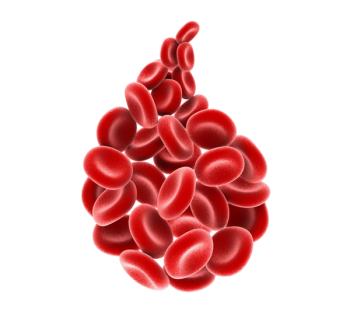
Visible Residual Disease Following Interval Debulking in Ovarian Cancer Is Associated With Positive Outcomes With Niraparib
Patients with newly diagnosed ovarian cancer who had interval debulking surgery and visible residual disease showed promising outcomes when treated with the PARP inhibitor niraparib, according to a post hoc analysis of a phase 3 clinical trial.
Maintenance therapy with niraparib (Zejula) was associated with a significant reduction in the risk of disease progression in patients who had interval debulking surgery (IDS) and visible residual disease (VRD), according to results of a post hoc analysis of the phase 3 PRIMA/ENGOT-OV26/GOG-3012 trial (NCT02655016) presented in a poster at the virtual Society of Gynecologic Oncology (SGO) 2021 Annual Meeting on Women’s Cancer.1
Timing of surgery, either primary debulking surgery (PDS) or neoadjuvant chemotherapy (NACT)/IDS, and residual disease status, were all factors used to evaluate patients in the intention-to-treat population.
“In this post hoc analysis, the impact of residual disease after PDS or IDS on the efficacy of niraparib was similar across subgroups,” the investigators who were led by Roisin O’Cearbhaill, MD, wrote in their poster.
There was a 42% reduction in risk of progression in patients who received PDS and had VRD (n = 183; HR, 0.58; 95% CI, 0.391-0.864), a 35% reduction in patients with IDS and no visible residual disease (NVRD; n = 304; HR, 0.65; 95% CI, 0.461-0.910), and a 59% reduction in patients with IDS and VRD (n = 149; HR, 0.41; 95% CI, 0.269-0.620). There were not enough patients with PDS and NVRD to evaluate efficacy for thise group (n = 37). In all 733 patients randomized on the trial, there was a 48% reduction in risk of progression (HR, 0.62; 95% CI, 0.50-0.76; P < .0001).
The median progression-free survival (PFS) noted with niraparib versus placebo across these subgroups were similar. Those who had PDS and VRD had a median PFS of 11.8 with niraparib compared patients 7.8 on placebo. The subgroup who had IDS and NVRD had a median PFS of 18.2 versus 10.9 months with placebo. Patients who had IDS and VRD had medians of 11.1 months versus 5.6 months on the study drug and placebo, respectively .
By surgical status alone, patients who received PDS had a median PFS of 13.7 months when given niraparib and 8.2 months when given placebo (HR, 0.67; 95% CI, 0.468-0.964). After IDS, patients had a 14.2-month median PFS with niraparib compred with 8.2 months with placebo (HR, 0.57; 95% CI, 0.441-0.731). In the overall population, the median PFS was 13.8 versus 8.2 months.
Patients with newly diagnosed, advanced, high-grade serous or endometroid ovarian, primary peritoneal, or fallopian tube with complete response (CR) or partial response (PR) to first-line chemotherapy were enrolled in this double-blind, placebo controlled, phase 3 trial.2 They were randomized 2:1 to niraparib at 300 mg or 200 mg daily depending on their body weight and platelet count versus placebo. Stratification was based on whether patients received NACT, best response to first-line platinum therapy (CR or PR), and tissue homologous recombination test status determined by Myriad myChoice CDx next-generation sequencing.
The primary end point of PFS by blinded independent central review and secondary end points included overall survival, PFS2, patient-reported outcomes, time to first subsequent therapy, and safety. The data cutoff was May 2019.
In the overall population, baseline characteristics were similar between the 2 arms. Approximately 65% of patients had stage III disease on niraparib and placebo, and about 35% had stage IV disease in either arm. There were 69% to 70% with a CR to prior therapy and 31% to 34% with PR.1
There were 32% who received PDS and 65% to 67% who received IDS. Thirteen patients given niraparib and 3 patients given placebo did not have surgery. NVRD after PDS was observed in 4.5% and 6.1% of patients in the niraparib arm and placebo arm, respectively. VRD after PDS was observed about 25% of patients. After IDS, patients with NVRD made up 41.5% and patients with VRD made up approximately 21%.
In the primary trial results, the investigators concluded that, “among patients with newly diagnosed advanced ovarian cancer who had a response to platinum-based chemotherapy, those who received niraparib had significantly longer PFS than those who received placebo, regardless of the presence or absence of homologous-recombination deficiency.”2
References
1. O’Cearbhaill R, Pérez-Fidalgo J-A, Monk BJ, et al. Efficacy of niraparib by timing of surgery and residual disease: a post hoc analysis of patients in the PRIMA/ENGOT-OV26/GOG-3012 study. Poster presented at: Society of Gynecologic Oncology 2021 Virtual Annual Meeting; March 19-25, 2021. Poster 10381.
2. González-Martín A, Pothuri B, Vergote I, et al; PRIMA/ENGOT-OV26/GOG-3012 Investigators. Niraparib in patients with newly diagnosed advanced ovarian cancer. N Engl J Med. 2019;381(25):2391-2402. doi:10.1056/NEJMoa1910962
Newsletter
Stay up to date on recent advances in the multidisciplinary approach to cancer.



















































































